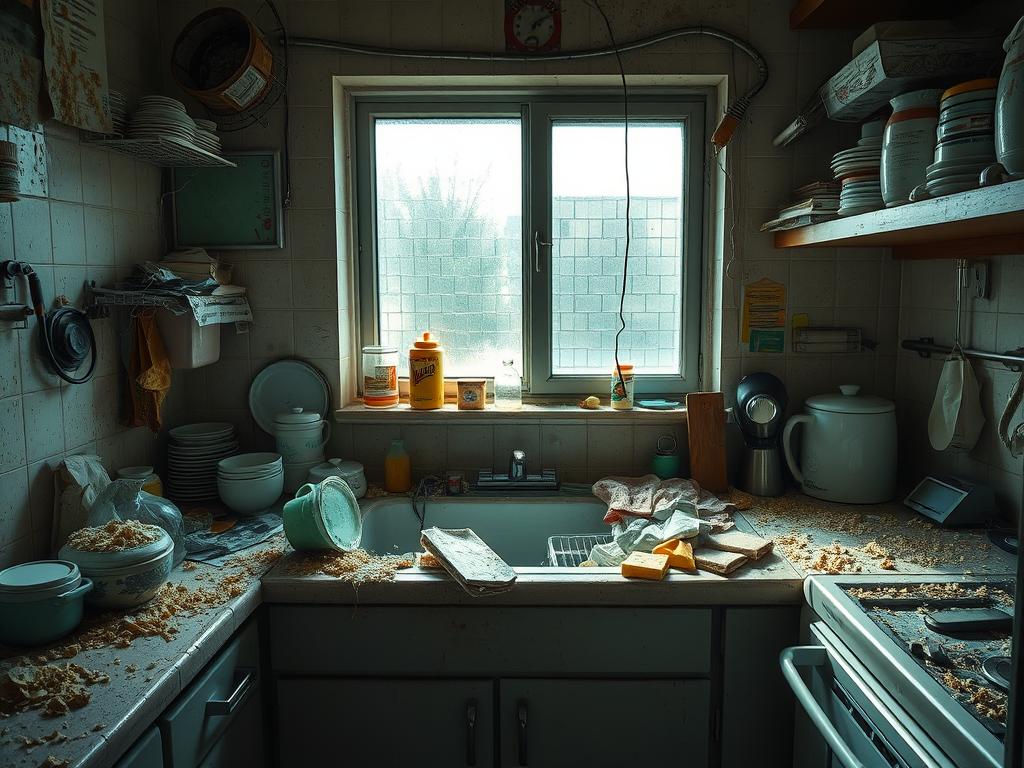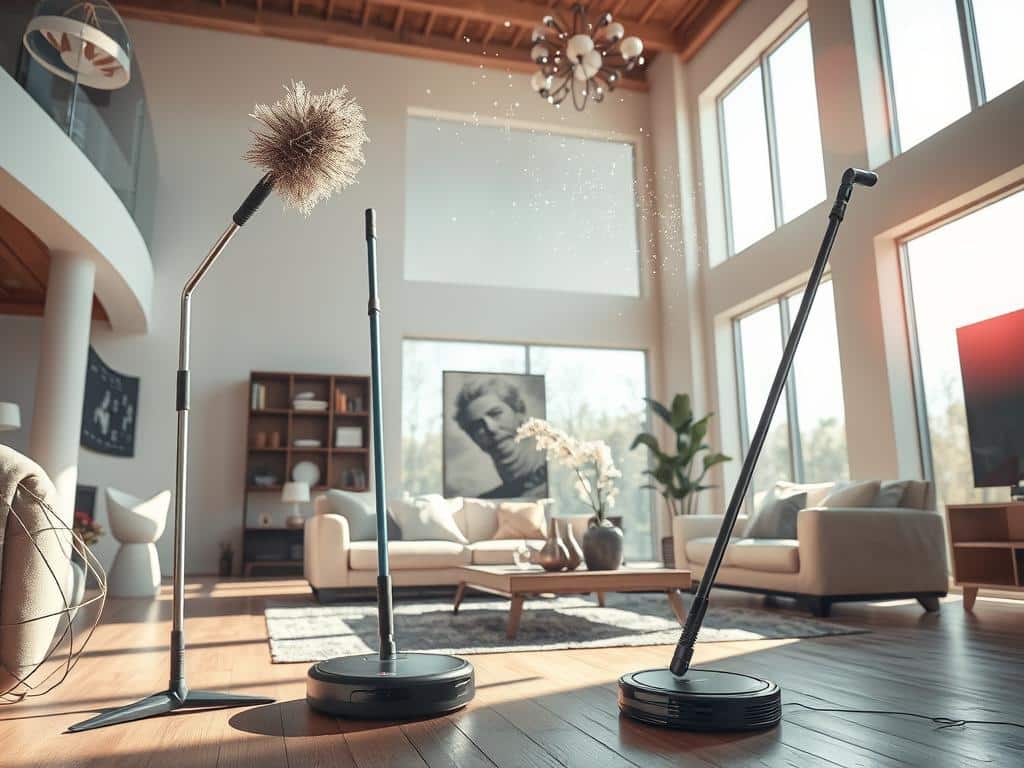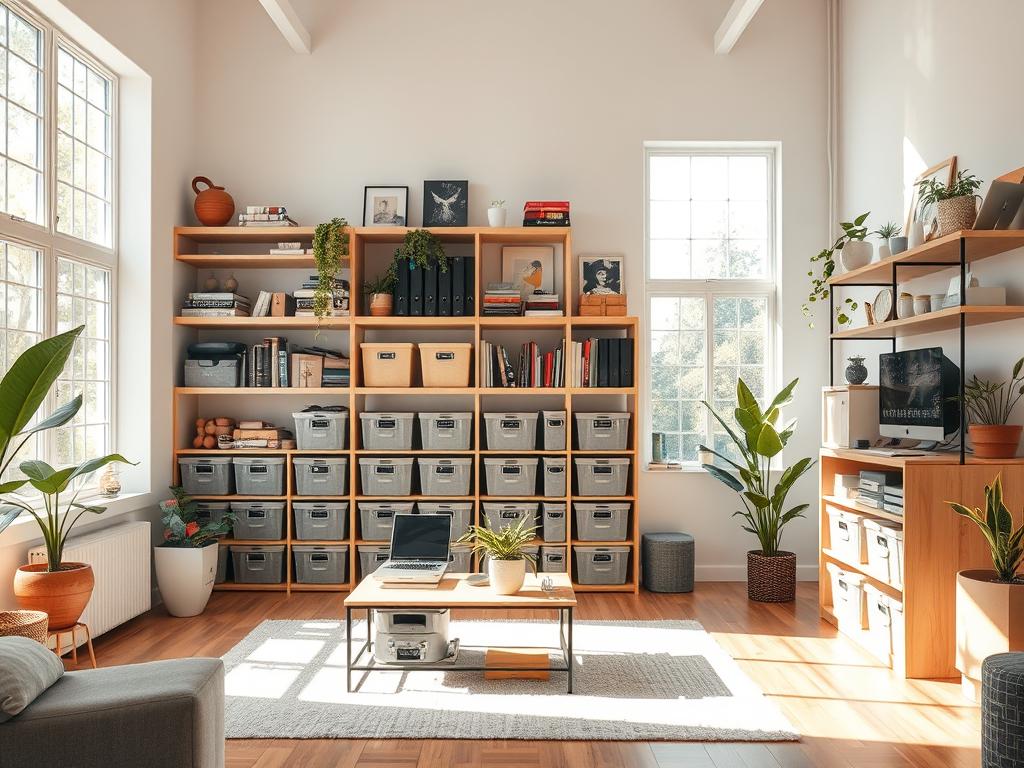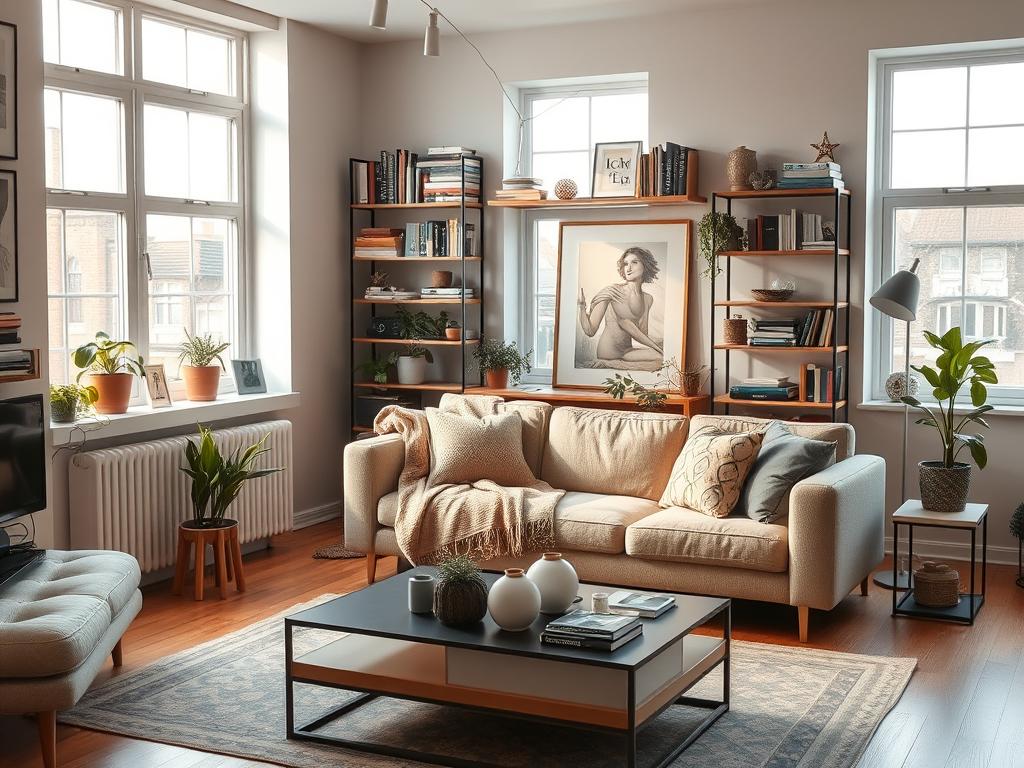
Creating an organized and welcoming home environment requires a balance of decluttering methods, strategic planning, and the realization that both cleaning and organizing are continuous tasks. Implementing practical home organization tips and effective cleaning routines can transform your space into a clutter-free, serene haven.
Begin by dedicating just 15 minutes daily to decluttering tasks. This gradual approach makes housekeeping less daunting and more manageable. Integrating smart housekeeping strategies and nearly daily routines ensures that your space remains orderly and inviting for years to come.
Statistics indicate that adopting these methods can result in up to a 40% reduction in clutter and increase the likelihood of maintaining an organized space by 60%. Remember, the key to success is consistent discipline and the smart allocation of household chores. By following these steps, you’ll master the art of minimizing clutter and enjoy a harmonious living space.
Decluttering: The First Step to a Clean Home
Initiating a clean living space begins with effective decluttering. By addressing accumulated messes, you’re not just tidying up but also enhancing mental clarity and overall home efficiency. Let’s delve into essential decluttering tips and how to create a successful decluttering plan.
Assessing Your Clutter
The first step in decluttering is a thorough clutter assessment. This involves scrutinizing each room to identify clutter “mountains” and other problematic areas. According to a Budget Dumpster survey, 75% of Americans have completed a decluttering project within the last year, highlighting how widespread clutter issues are. By evaluating your living spaces, you pinpoint specific zones needing attention. Remarkably, 48.5% of individuals feel stressed due to clutter, while 42.5% feel embarrassed. Therefore, addressing and acknowledging these areas is a significant initial step.
Creating a Decluttering Plan
After assessing your clutter, the next step is to create a detailed decluttering plan. A practical approach is the 12/12/12 rule, where you find 12 items to throw away, 12 to donate, and 12 to return to their designated places. Additionally, the five-second rule helps you decide if an item is worth keeping by recalling its last use within five seconds. More so, integrating a room-by-room decluttering strategy ensures a systematic process where one room is decluttered thoroughly before moving on to the next. This systematic method can transform even the most cluttered spaces into clean living areas over time.
Allocating Specific Days
Finally, setting a decluttering schedule can significantly streamline the process. Whether you prefer a short, intense burst of decluttering over a weekend or a more extended 30-day period, having an allocated timeframe helps maintain momentum. The 20/20 rule, which suggests that items replaceable for under $20 in less than 20 minutes are disposable, can also be beneficial. Furthermore, assigning specific days for certain areas allows you to follow a structured, room-by-room decluttering strategy without feeling overwhelmed. By adhering to a schedule, you not only form a routine but also make steady progress, eventually achieving a beautifully clean home.
Overall, decluttering is an essential foundation for a clean living space. With the right assessment, plan, and schedule, you can effectively manage and reduce clutter, leading to a healthier and more enjoyable home environment.
Organize and Clean House: The Dual Process
Maintaining an orderly domain requires both organization and cleanliness. Implementing an effective house organization system ensures that every item has its designated place, making spaces not only tidy but welcoming. With a well-thought cleaning regimen, your living area remains hygienic and inviting. Combining these two aspects can revolutionize your home maintenance approach.
Ensuring that each item is immediately placed back in its proper spot after use is crucial to avoiding the gradual slide into chaos. For instance, during a decluttering project, deciding on-the-spot whether to keep or discard an item can prevent a bigger mess down the road. This method was used effectively in a gameroom project, involving discarding old items like two-year-old cornflakes and unwanted packing slip holders.
It’s vital to harness efficient organization techniques when dealing with both large accumulations and everyday items. In a cluttered garage, filled with Keep Boxes, immediate decision-making efficiencies were applied to streamline the process. Items like Heelys wheels were promptly reunited with their corresponding objects, ensuring future organization.
The key to avoiding an overwhelming task is continuous, smaller steps. The author emphasizes the value of incremental progress with examples such as a 10 to 15-minute nightly reset of living spaces, which can notably improve morning routines. Using quality organizational containers can reduce the need for replacements and offer better durability, simplifying home maintenance in the long term.
Additionally, incorporating multipurpose furniture and bright-colored storage solutions can enhance efficiency and appeal, especially benefiting neurodivergent individuals. Categorizing chores helps efficiently distribute the workload among family members, while organizing the fridge by person can be incredibly useful in shared households. Employing vertical storage solutions like wall-mounted shelves and creating multipurpose zones throughout the home optimizes space and functionality.
Essential Tools and Supplies for an Organized Home
Creating a well-organized home requires both planning and the right tools. Adequate preparation and having the necessary home organization essentials at your disposal can make a huge difference in maintaining a tidy and functional space.
Cleaning Supplies Checklist
An effective cleaning routine begins with a comprehensive checklist of cleaning supplies. Ensure you have all the basics, including disinfectants, multi-surface cleaners, mops, and vacuum cleaners. Not only do these items simplify your cleaning routine, but they also lay the foundation for a clean and organized home. Investing in high-quality cleaning supplies ensures each area of your house remains spotless.
Organizational Tools
Your home organization essentials should include a variety of organizational gadgets designed to streamline your daily tasks. Some of the most effective tools include:
- Adjustable Drawer Dividers: Rated as the number one tool for drawer organization, they effectively separate items like jeans, leggings, and shorts.
- Cloth Drawer Organizers: Great for keeping dressers neat and orderly.
- Two-Tier Basket Organizer: Versatile for different household areas.
- Food Storage Lid Organizer: A transformative tool for managing tupperware containers.
- Label Makers: Essential for efficient labeling and easy identification of items.
These tools not only optimize your storage spaces but also significantly enhance the aesthetics and functionality of your home.
Storage Solutions
Effective storage optimization starts with choosing the right storage solutions. Clear plastic bins, especially medium-sized ones, are widely used across various locations like art closets, pantries, and linen closets. To get the most out of your storage solutions, consider the following:
- Divided Clear Plastic Bins: Ideal for sorting smaller items.
- Lidded Plastic Bins: Perfect for stackable containment of less-accessed items.
- Lazy Susans: Useful in pantries, fridges, and linen closets for easy access to items.
- Jewelry Organizers: Recently purchased and highly effective in keeping jewelry untangled.
By incorporating these tools and gadgets, you can achieve efficient storage optimization and ensure that everything in your home has its designated place. It is not just about finding storage, but optimizing it to suit your needs.
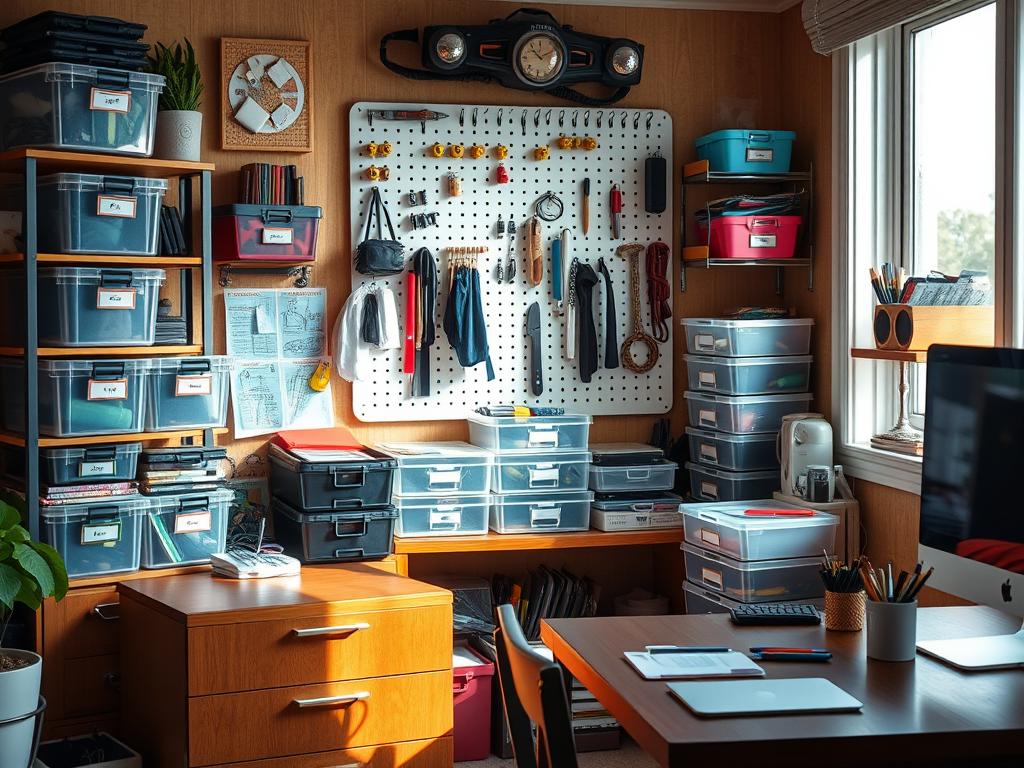
Room-by-Room Cleaning and Organizing Guide
Each room in your home serves a unique function and thus warrants a customized approach for cleaning and organization. By adhering to space-specific organization strategies, you optimize both utility and enjoyment in different areas of your house. This guide offers targeted advice for kitchen declutter, living room organization, bedroom tidiness, and bathroom sanitation to elevate your home environment systematically.
The Kitchen
Prioritizing kitchen declutter is crucial as it directly impacts your cooking efficiency and overall cleanliness. Start by removing expired food items from your pantry and refrigerator. Utilize clear, labeled storage containers for dry goods and spices to make retrieval easier. Simplify your utensil drawer by sorting and discarding duplicates or seldom-used items. Incorporating drawer dividers and shelf organizers will also maximize your kitchen space.
The Living Room
For effective living room organization, focus on arranging entertainment and recreational items. Store remote controls, gaming consoles, and DVDs in dedicated baskets or cabinets. Introduce a stylish media console to keep your electronics and cords tidy. Use floating shelves or bookcases for books and decorative items to prevent clutter from accumulating on coffee tables and surfaces. Consider multi-functional furniture like ottomans with storage compartments.
The Bedroom
Ensuring bedroom tidiness can greatly enhance the quality of your rest. Start by organizing your wardrobe: separate seasonal wear, donate unworn clothing, and make use of drawer dividers and hangers for a streamlined closet. For personal items like jewelry and skincare products, designate specific storage solutions such as jewelry boxes or vanity trays. Keeping your nightstand minimalistic by limiting items to essentials like a lamp, clock, and one or two personal items also helps maintain order.
The Bathroom
Bathroom sanitation is key for a clean and hygienic space. Discard expired personal care products and medicines promptly. Arrange daily toiletries using caddies or countertop organizers to keep everything accessible but tidy. Regularly sanitize high-touch areas like faucets, light switches, and door handles to reduce germs. Investing in over-the-toilet shelving or under-sink storage can help manage bathroom essentials more effectively.
| Room | Key Tasks | Recommended Frequency |
|---|---|---|
| Kitchen | Declutter pantry and fridge, organize utensils, use labeled containers | Weekly |
| Living Room | Sort entertainment items, use shelves for decor, manage electronics | Monthly |
| Bedroom | Organize wardrobe, minimize nightstand items, store personal effects | Bi-weekly |
| Bathroom | Discard expired products, sanitize high-touch areas, optimize storage | Weekly |
Developing Daily and Weekly Cleaning Routines
Consistency is key to maintaining a clean and tidy home. Implementing a well-structured cleaning routine checklist, incorporating both daily maintenance tasks and weekly deep cleaning, ensures your living space remains spotless without feeling overwhelmed. Let’s explore practical strategies and chore scheduling tools to keep your home in top condition.
Daily Cleaning Tasks
Daily maintenance tasks are essential for handling everyday messes and preventing the buildup of dirt. Activities like making the bed, loading and unloading the dishwasher, wiping down counters, and taking out the trash should be integrated into your daily routine. These tasks don’t take long and can be incorporated into morning and evening schedules to enhance efficiency.
- Making the Bed
- Loading/Unloading Dishwasher
- Wiping Counters
- Taking Out Trash/Recycling
- Sweeping/Vacuuming Floors
- Watering Plants
Weekly Cleaning Tasks
Weekly deep cleaning helps tackle areas that don’t require daily attention but need regular upkeep to prevent grime and dust accumulation. These tasks include dusting surfaces, vacuuming the entire house, scrubbing bathrooms, and mopping floors.
| Weekly Task | Description |
|---|---|
| Dusting | Remove dust from all surfaces, including shelves and electronics. |
| Vacuuming | Vacuum carpets, rugs, and upholstery throughout the home. |
| Kitchen Cleaning | Clean appliances, counters, and floors in the kitchen. |
| Bathroom Cleaning | Thoroughly scrub sinks, toilets, and showers. |
| Sweeping/Mopping Floors | Sweep and mop hard floors to maintain cleanliness. |
Using Schedules and Planners
To effectively manage household chores, using task planners and chore scheduling tools can be incredibly beneficial. These tools help distribute tasks evenly throughout the week, ensuring that every chore is accounted for and no area is neglected. Regularly reviewing and adjusting your schedule can help refine your cleaning routine to best fit your lifestyle.
- Print out task lists for easy reference.
- Schedule cleaning appointments to form a habit.
- Stay flexible to accommodate unexpected events.
Incorporating a structured cleaning routine checklist will not only keep your home impeccably clean but also reduce stress by breaking down tasks into manageable daily maintenance tasks and weekly deep cleaning sessions. This balanced approach ensures cleanliness is maintained consistently, leaving you more time to enjoy other activities and stay ahead of the mess.
Maintaining a Clutter-Free Home
Sustaining a clutter-free home goes beyond an initial burst of organization and cleaning. It’s about embracing an organized lifestyle with habit-forming strategies that promote sustained cleanliness and declutter maintenance. A critical first step is to regularly return items to their designated spaces, ensuring that no room returns to a state of disarray. For instance, habitually placing frequently used objects back in their spots can mitigate daily chaos.
Managing clutter also involves controlling the influx of new items into your home. Adopt a mindset shift towards intentional purchasing, evaluating the necessity of new possessions before bringing them in. Guidelines such as limiting hangers to 100 per person for seasonal clothing can help maintain an organized closet space. Additionally, set clear boundaries for categories like food storage, toys, or craft supplies to maintain a system of order.
Regular maintenance tasks, performed daily and weekly, are essential to prevent clutter buildup. Simple actions like making your bed each morning, tidying the kitchen after meals, and starting a load of laundry can significantly reduce household clutter. Maintaining a clutter-free environment can help lower stress levels, as high clutter has been linked to increased cortisol, affecting overall well-being.
To keep the home organized post-decluttering, periodically evaluate and remove possessions that no longer serve a purpose. This helps in slow accumulation of items and sustains the clutter-free state. If managing clutter seems overwhelming, consider using a comprehensive declutter guide. For more detailed techniques on maintaining cleanliness, especially covering areas like carpet hygiene, you can refer to this carpet cleaning guide to further support your efforts in keeping your living space pristine.

